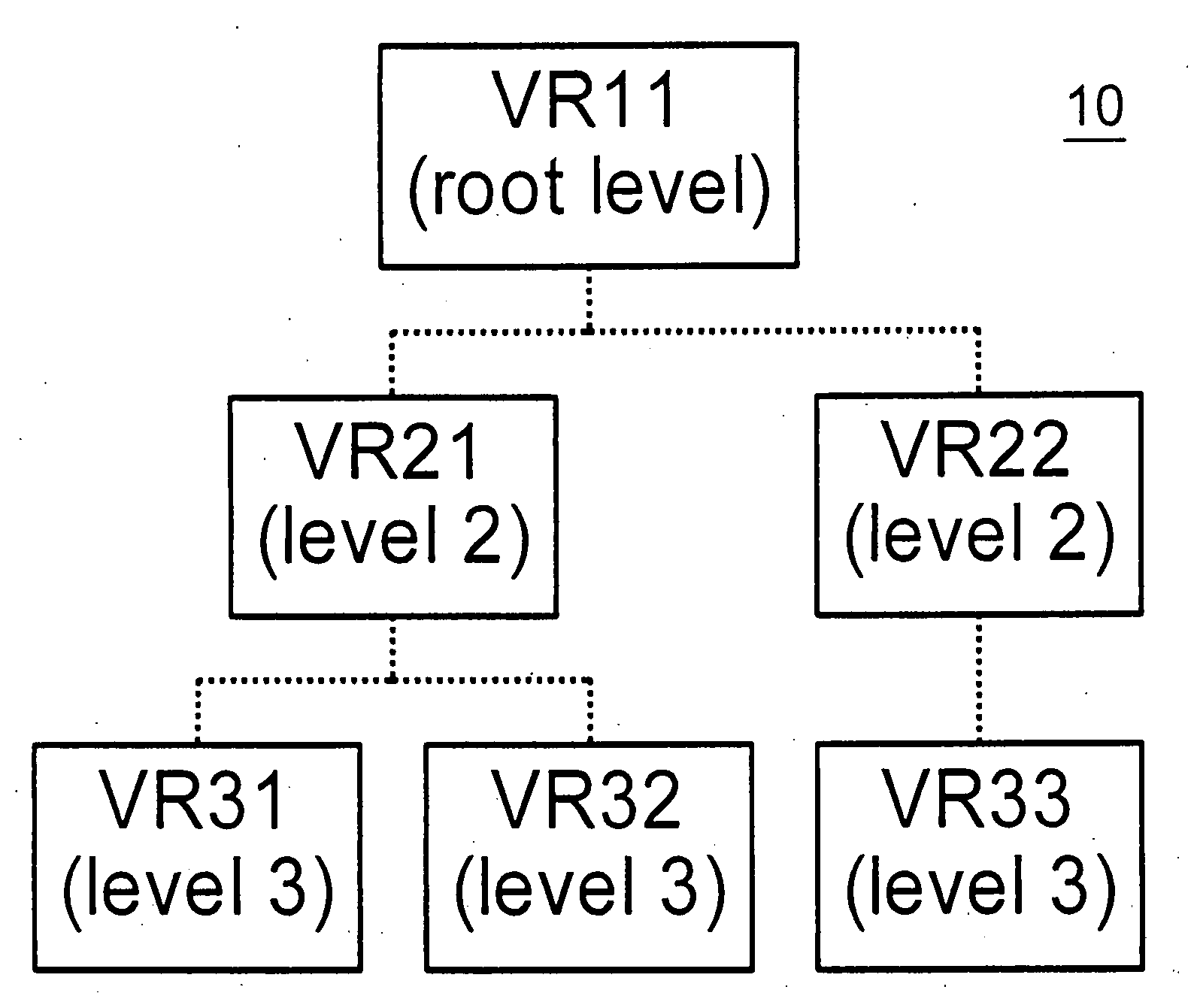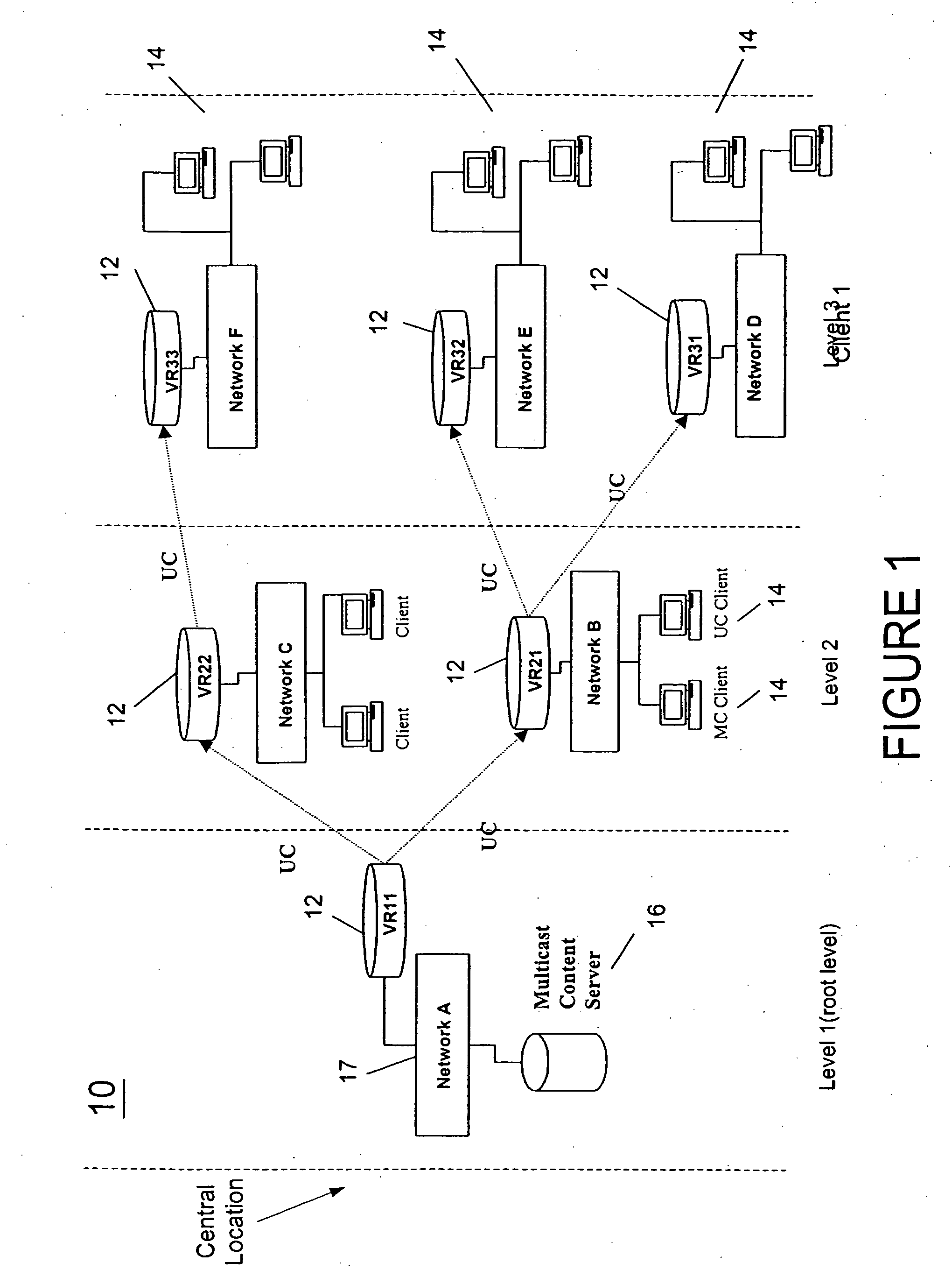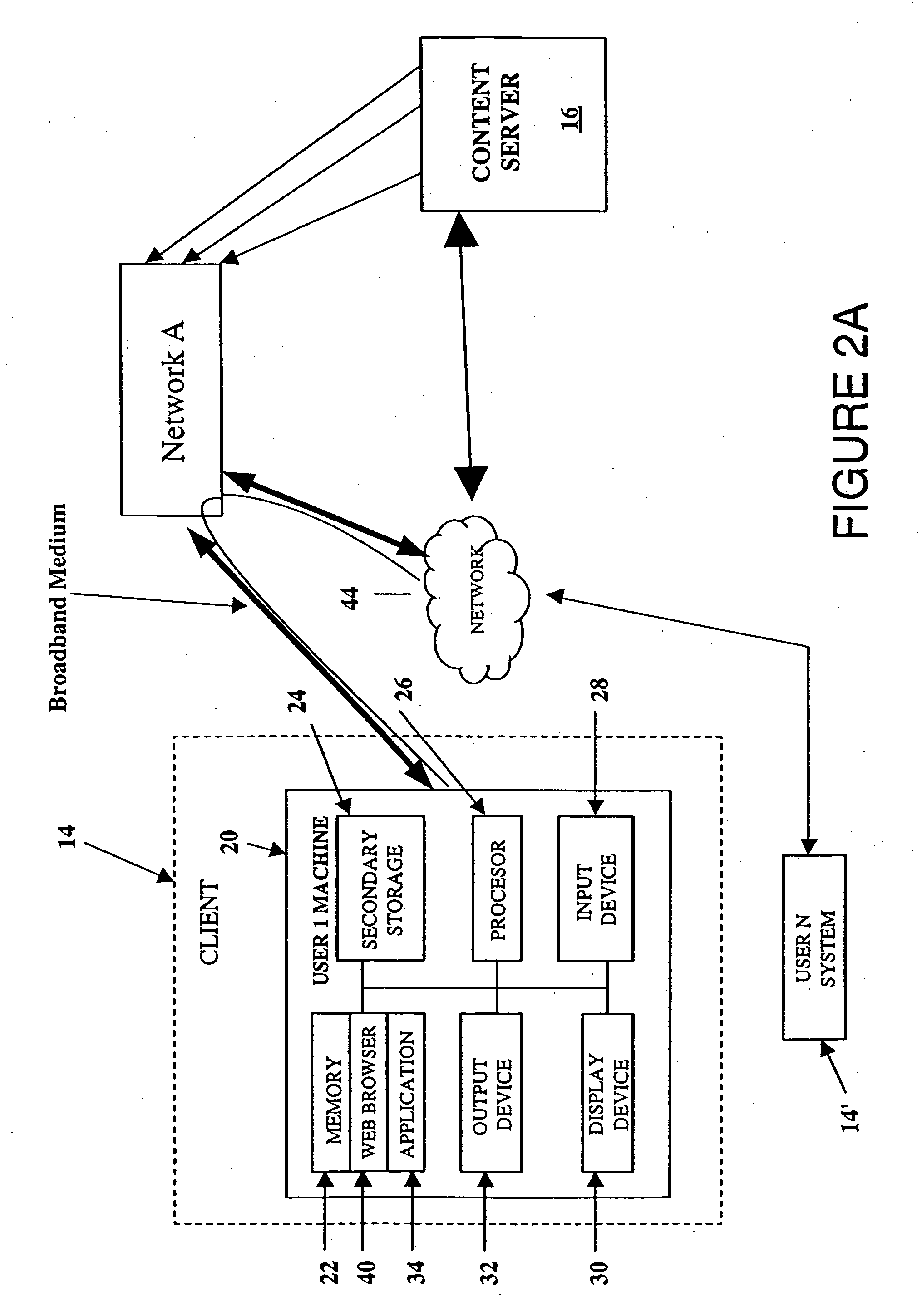Virtual multicasting
a virtual multicasting and multicasting technology, applied in the field of virtual multicasting, can solve the problems of inability to enable ip multicasting in most networks, especially internet service providers, and the inability to broadcast heavily requested content, etc., and achieve the effect of simulation multicasting
- Summary
- Abstract
- Description
- Claims
- Application Information
AI Technical Summary
Benefits of technology
Problems solved by technology
Method used
Image
Examples
Embodiment Construction
[0020]FIG. 1 is a schematic diagram of an exemplary application of a Virtual Multicasting (VMC) system according to the present invention. The embodiment shown in FIG. 1 is a virtual network 10 including a plurality of sub-networks (networks A-F). The virtual network 10 in FIG. 1 provides a fan-out distribution of packets. The VMC system includes software routing applications as well as computer hardware for hosting these applications. The components of the VMC system are listed as follows:
VMC System Hardware Components
[0021] Virtual Routers (VRs) 12, which preferably are standard computers with networking capabilities. Except for client components, the VMC software resides on the VRs.
[0022] Clients 14, which preferably are standard computers for end-users that comprise client software, including certain VMC software components, and receive content delivered by the VMC system over the virtual network 10. Clients 14 are the end-recipients of content distribution. Clients 14 prefe...
PUM
 Login to View More
Login to View More Abstract
Description
Claims
Application Information
 Login to View More
Login to View More - Generate Ideas
- Intellectual Property
- Life Sciences
- Materials
- Tech Scout
- Unparalleled Data Quality
- Higher Quality Content
- 60% Fewer Hallucinations
Browse by: Latest US Patents, China's latest patents, Technical Efficacy Thesaurus, Application Domain, Technology Topic, Popular Technical Reports.
© 2025 PatSnap. All rights reserved.Legal|Privacy policy|Modern Slavery Act Transparency Statement|Sitemap|About US| Contact US: help@patsnap.com



